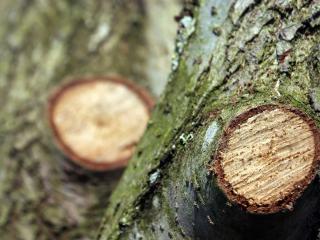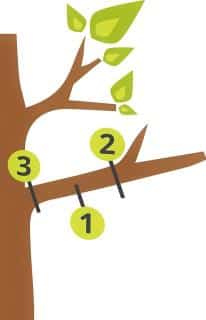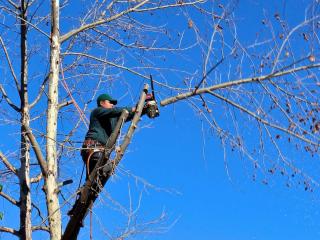

Need to prune a tree, whether due to a dead branch, a hazard, or simply an eyesore? Not sure how to go about it?Follow our advice to know when and how to prune, while minimizing risk to both you and your tree.

For the tree itself, it will always be better to undergo pruning early on, when undesired branches are still small. Envision your tree growing and decide which shape it should have. Ideally, you’d prune away excess branches every 2 years, keeping only the final structural branches. This guarantees that you only ever need to cut small branches instead of riskier large ones.
Branch size guides your choice. Use a pruner or a lopper for small diameters. You’ll also see these in stores as pruning shears or branch cutters. For bigger diameters, greater than 1 or 1½ inches (3 or 4 cm), a pruning saw makes cleaner cuts. For really big branches, you might need a chainsaw.
Before you start pruning, make sure your tool cuts well. If it’s a pruner or lopper, it needs to be sharp enough. For a saw, make sure it doesn’t lack any teeth, or you’ll end up tearing instead of sawing. For a chainsaw, check that the chain is sharp before you start. Then, to prevent infection or disease spread, clean and sterilize your tools after each cut.
Allow your tree to heal by not cutting too close to trunk. Cut angle should be perpendicular to the cut branch axis (not parallel to trunk).

Things get trickier when you have to use a saw for a larger branch. You’ll need to follow three steps:

Don’t work on a ladder, stepladder or any other unstable situations. Of course, for your safety, in case of a larger and more technical project, better call a professional.
It’s important to schedule this step as well, since piles of leaves and wood can attract undesirable animals like snakes or rodents. Best is to immediately shred branches into rich ramial chipped wood, but you might want to keep a small pile as shelter for beneficial animals like the hedgehog and shrew.